Published
on 24
Jan 2025
|
All rights reserved.
|
|
|
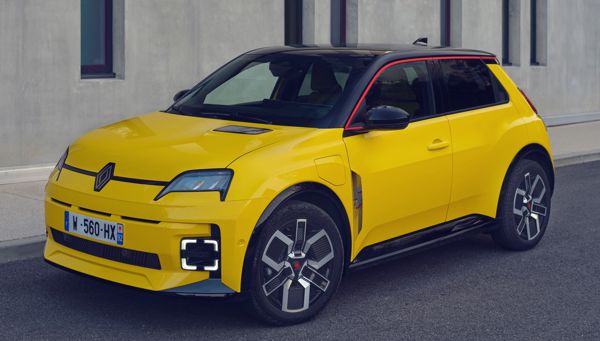
|
|
To
repeat an icon is not easy. To reinvent an icon is even harder. Renault
succeeds in doing so.
|
|
Few
small cars have so much visual appeal. The reborn Mini has it, so is
Fiat 500. They are successful examples of capitalizing genes from past
icons and modernizing into something you won’t feel outdated or
compromised. Incidentally, both were designed by Frank Stephenson.
There are other attempts come to mind, but not quite as successful,
such as New Beetle, Citroen C3 (supposed to be a modern 2CV), and I
would add the latest electric Mini and the upcoming Fiat Grande Panda.
That is to say, designing a retro small car that looks great while
meeting modern requirements is an incredibly hard job.
For the above reasons, Renault should be proud of the job its designers
did to the new 5 – or more precisely, 5 E-Tech. The job is made even
harder as its top management determined to turn the iconic supermini
into a modern EV. This means packing the battery under its floor,
pushing up the passenger cell accompanied with roof and waistline. Will
it look as bulky as a BMW i5? Or just about any European small EVs that
use the name “crossover” to hide their inability to make the cars low
enough?
If you put the 5 E-Tech beside the original (1972) or the second
generation (1985) R5, you will find it differs massively. It is a lot
larger in all dimensions, particularly in height. The bonnet locates
much higher, so is the waistline. However, the windows are relatively
shallow, as Renault insists to keep the roof below the 1.5m mark, which
is encouraging. To reduce the bulky perception, the car employs 18-inch
wheels regardless of models and trims. Front and rear fenders have
pronounced pressing to appear wider than they are, giving a visual link
to the old 5 GT Turbo. Despite the very different proportion and door
counts (this is a 5-door instead of 3), the boxy yet rounded body shell
is still recognizable as a descendent of the 5. The bonnet curls down
halfway to the grille in the same way. The C-pillars and the vertical
taillights mounted on them pay tribute to the original design.
Moreover, like the original car, it is offered in various vibrant
colors, including bright yellow, green and blue. Small cars should be
cheerful, shouldn’t they?
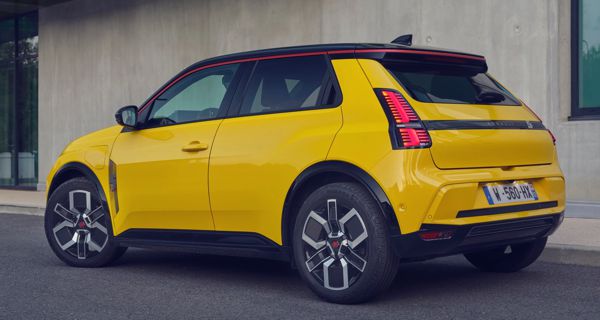
|
|
Few
small cars could be so desirable.
|
|
But the new 5 is not exactly a retro design. Far from that actually. If
you have no knowledge about the classic car, you won’t guess from its
shape – how can an air dam this aggressive be associated with a classic
car? Ditto the rectangular LED light signatures in place of foglamps,
the laughing-eyes headlamps, the square LED panel on bonnet that
displays charging status and the radical wheel design. The only thing
that hints about not a modern EV is the relatively square proportion.
While most rivals shape their EVs like a melted piece of soap in
pursuit of low drag, Renault reckons character is more important than
an extra 10 or 20 kilometers of driving range.
Inside, the philosophy is exactly on the contrary. While most EVs kill
all physical switches and put all functions on a huge touchscreen just
to show a sense of future, the 5’s cockpit looks a lot more
conventional. Yes, it does have a digital instrument and touchscreen,
and they are by no means small at 10-inch, but Renault puts them into a
square binnacle that is reminiscent to the dashboard of the old R5
Turbo. The infotainment screen is angled towards the driver. It runs
slick Google OS and is pretty easy to use. Below the air vents is a row
of physical buttons for controlling HVAC and turning safety / driver
assistance functions on and off. Audio control is left to the stalk
behind the steering wheel. It makes life so much easier while driving
the car.
Why didn’t other EV makers think about that? Everybody knows physical
buttons are useful, but they want to cut cost. Renault cuts cost, too,
but in a smarter way. Some of the switchgears are taken straight from
Clio and other models – you don’t need to re-invent wheels, do you? The
Ampr platform on which the 5 as well as the upcoming 4 built is a new
small EV platform, of course, but it reuses some parts from the
conventional CMF-B platform, such as the MacPherson strut front
suspension from Captur and the rear multi-link from Dacia Duster 4x4,
just a few examples how it saves money.
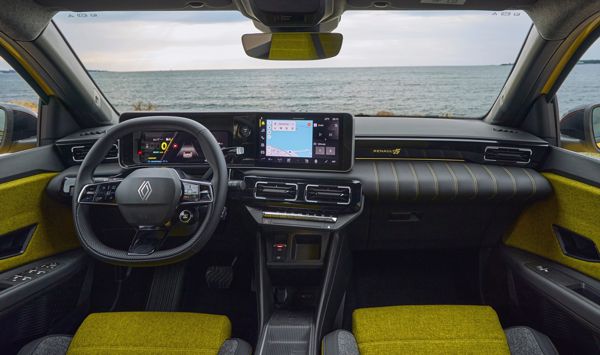
|
|
Cabin
looks classical yet functional.
|
|
Besides, strictly limiting its size and weight helps. Modern superminis
get larger and heavier each generation, but the 5 is slightly smaller
than either Clio or Zoe (the car it replaces). It is also designed to
be strictly front-wheel-drive, so no need to leave space or
strengthen structure to accommodate twin-motor option. This in turn
allows it to use smaller and lighter batteries to save money. You can
choose between a 40kWh pack or 52kWh pack, weighing 240 and 300 kg,
respectively. Thankfully, Renault sticks with the more efficient NMC
chemistry, unlike the entry-level Citroen or Dacia EVs that turn to
cheaper and heavier LFP battery. This allows the 5 to tip the scale at
just 1350 kg or 1450 kg, remarkably light for an EV. An electric Mini
Cooper with comparable battery weighs at least 155 kg more ! It goes
without saying less weight improves performance and handling.
The 40kWh battery mates with a 120 hp and 166 lbft motor, good for 0-60
mph in 8.5 seconds. That would be good enough to qualify for a warm
hatch in the good old days. As we have entered the EV-era, you will
need the larger battery’s 150 hp / 181 lbft motor to deliver decent
performance, like 0-60 in 7.6 seconds. Top speed of both versions is
limited by gearing to 93 mph. If you need higher performance, step up
to Alpine, which offers 2 levels of upgrade.
The official range is 309 km (192 miles) and 411 km (255 miles), very
decent for its class. However, road testers found they are too
optimistic even by the usual standards of EVs. Still, for a supermini
primarily used in urban area or nearby, the 5 should offer sufficient
range for most usages. As for charging, 100kW is just about the norm of
the class, which gets from 0-80 percent full in half an hour.
Open the door, there is no big-car thunk, but the interior is what a
pleasant place to spend time! You are served with a very comfortable
and supportive and great-looking seat. The driving position is just a
little higher than an ICE hot hatch, which is remarkable for an EV. The
quality of materials look good too if you select the mid-spec. Techno
trim. Artificial leather wraps the dash facing the front passenger. The
door cards are trimmed with soft fabrics and the interior is
color-coded to match the exterior. Hard plastics are unavoidable, but
they are used lower down and not in touch points. Renault uses
materials smartly to maximize the quality perception.
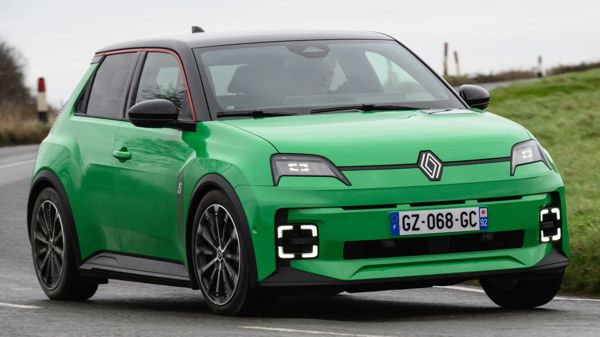
|
|
Multi-link
suspension lends it remarkable ride comfort.
|
|
As in many French cars, the 5 offers plenty of room up front but rear
passengers are destined to suffer from little legroom if the front
occupants are 6-footers. This is partly because the car is small,
partly due to putting luggage space to higher priority – the boot is
usefully large at 277 liters. A sliding rear bench would have solved
the problem, but obviously that feature will be reserved for its sister
car 4, which sells versatility. However, the classic 5 was also a tight
city car designed for primarily young singles or couples, so there is
nothing to complain about.
Like the cabin, the driving manner feels instantly good. Performance
from the 150hp motor is more than adequate, as the 5 feels brisk below
60 mph, after which the performance tails off noticeably. The brake
calibration is expertly judged, offering a firm pedal and linear
response. The steering feels quick and progressive. The car turns into
corners responsively. The chassis feels rigid. The multi-link
suspension – a classy and worthwhile spending for a B-segment car –
and 55% side wall of tires do a remarkable job of soaking up large and
small bumps, delivering a
comfortable ride unheard to small EVs. In normal driving, the 5 feels
as good as any small EVs can get.
Up the pace, however, its limitation is revealed. The 195 tires lack
the grip and the softer suspension lacks the control of a Mini Cooper.
It runs into understeer more easily. Perhaps we should not be misled by
its sporty appearance. The 5 is not supposed to be a hot hatch or
something willing to compromise ride comfort for go-kart handling like
the Mini Cooper. Just like the original classic, it is an everyday car
for the majority. That is not to say it is bad. No, not at all. The
potential is clearly there. It is just that Renault reserves the hot
hatch role to Alpine versions, which we shall see soon.
Keeping the standard 5 as it is has another key benefit: affordable.
Just £23,000 can get you the base car with small battery, which
is incredibly bargain. Most people will opt for the larger battery with
mid-range spec. at a very attractive £27,000. Even the top
spec. model at £29,000 is not expensive considering how desirable
the 5 is. It is considerably cheaper than the electric Mini and far
more practical than the Fiat 500 electric. While Citroen e-C3 (or its
Stellantis sister cars) or BYD could match it on price, they can never
be so desirable.
After soldiering on with Zoe for so many years,
Renault finally hits the sweet spot with its new small EV. And I have
to say, nothing could be as surprising as the fact that it is
reinvented from the classic R5.
|
Verdict:    
|
Published
on 12
Feb 2025
|
All rights reserved.
|
|
Alpine A290
|
|
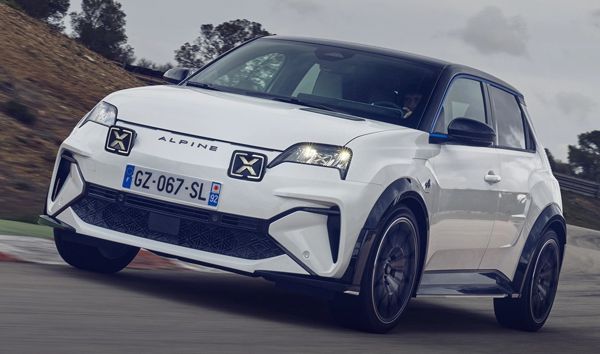
|
|
The
most anticipating electric hot hatch in Europe this year.
|
|
Alpine A290 might be the
most anticipating electric hot hatch in Europe this year. It competes
with the new electric Mini Cooper SE, Abarth 500e and 600e as well as
the fabulous Alfa Romeo Junior Veloce in a fast-growing market segment.
It is compact and relatively affordable, starting from £33,500
for 180hp base model GT, rising to £37,500 for 220hp top model
GTS. The question is, can it beat the Alfa and conventional hot hatches
like Hyundai i20 N or Toyota GR Yaris?
The exterior looks quite promising. Alpine’s conversion includes a
revised fascia with Alpine badge, 4 square LED headlights with rally
car-inspired X-shaped motifs as well as sportier front intakes and
skirts. The wheel arches have been widened by 60mm to accommodate wider
tracks and wheels. The body sides are pressed with pseudo intakes to
resemble the mid-engined R5 Turbo of 1980. The alloy wheels are larger
at 19-inch. Overall, it looks pretty aggressive, different enough to
attract boy racers while without losing everyday practicality.
Predictably, the A290 retains the 52kWh battery of the long-range
version of R5 as well as its 100kW charging speed. Range is down from
255 to 226 miles due to the increased drag and grippier tires. The
battery is placed under the floor while the front-mounted motor drives
the front wheels through an open differential, unlike Abarth and Alfa
which get a mechanical LSD. Wheelspin is taken care by braking instead.
While the R5's motor offers up to 150 hp, the Alpine version employs
the larger motor of Megane E-Tech. It produces 180 hp and 210 lbft on
the base GT or 220 hp and 221 lbft on GTS. The former is good for 99
mph and 0-60 in 7 seconds flat, while GTS improves those figures to 106
mph and 6.1 seconds. That’s slightly quicker than Mini Cooper SE but
probably not as quick as you would expect for an electric hot hatch. On
the plus side, by keeping the battery small and drivetrain simple the
A290 tips the scale at 1479 kg, undercutting Mini by 126 kg.

|
|
Overtake
boost button is more gimmicky than useful.
|
|
Inside, the flat-bottom steering wheel of A290 incorporates a lot of
buttons, including a pair of round ones that control regenerative
braking and F1-style overtaking boost. The latter is said to boost
power by up to 10 seconds, but actually doesn’t take horsepower beyond
the said maximum. Instead, it is just a shortcut for full throttle, an
alternative to flooring down throttle, so more gimmicky than useful.
Meanwhile, the regenerative braking control is a rotary switch offers 4
levels to choose from, one of which close to one-pedal driving. On the
transmission tunnel, it uses an A110-style 3 buttons setup for RND mode
at the expense of cupholders. The 10-inch instrument and touchscreen
are carried over from the R5, although the software interface is
unique, including g-force meter and a tutorial function to coach you
how to drive faster on a track. Sportier Nappa leather bucket seats hug
you tight while leaving less room for rear passenger's knees. You sit
higher than desired but that is understandable. Overall impression of
the cockpit is positive – sporty and pretty high-quality.
Like R5, the suspension is struts up front and multi-link at the rear -
the latter consists of a MacPherson-style spring strut, a longitudinal
link and a pair of lower transverse links. However, Alpine equipped it
with hydraulic bump-stops and new knuckles to achieve the wider tracks
as well as bespoke springs, dampers and anti-roll bars. The aluminum
front subframe on which the motor mounted is also unique to the Alpine.
GTS is installed with 320mm front brakes with Brembo 4-pot calipers
from the A110 sports car, and Michelin Pilot Sport 5 rubbers.
On the Road
For a car with Alpine’s name and a rally car-like appearance, the
initial impression could be a little disappointed. Although 0-60 in 6.1
is by no means slow for a compact hot hatch, it is not something to
write about these days – the Hyundai i20 takes 5.9 seconds, for
instance. Moreover, as in all EVs, after the initial surge,
acceleration tails off much quicker than conventional engines, so in
terms of performance it is more in line with warm hatches than true hot
hatches. The A290’s weight – light for an EV but still nearly 300kg
more than i20 N – certainly plays a role here.
To make the experience more exciting, the A290 features artificial
noise played by audio system. Fortunately its sound profile is
orchestrated from the original noises of electric motor, not playing
fake engine noises.
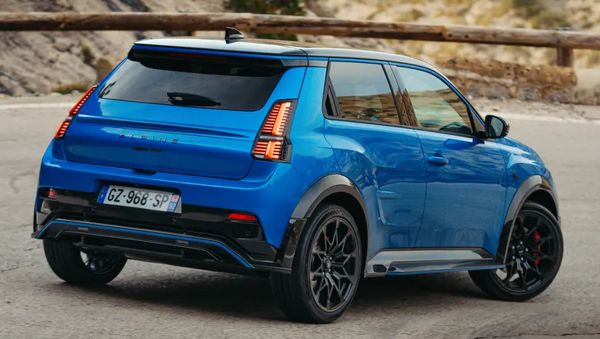
|
|
Surprisingly,
it feels more at home on a track...
|
|
Due to the weight, the car’s handling is not going to be as agile or as
chuckable as, say, a Renaultsport Clio. However, its multi-link
suspension has its weight largely controlled, displaying little roll.
The suspension setup is firm, but the damping is superb, keeping body
motions in check and ride comfort decent. The Michelin Pilot Sport S5
rubbers offer bags of grip. It all feels very matured, much more than
its size and class suggested. Almost a Golf GTI actually.
The steering is direct and accurate, set relatively light to help it
feel more agile, but sadly not blessed with feel. With so much torque
going through the front wheels and an open differential, torque steer
is inevitable whenever you apply power in corners, as the steering
wheel tugs in your hands. Be more aggressive on throttle and the inside
front wheel will spin before traction control intervenes. Oddly, the
torque steer and wheelspin actually adds to the driving experience
which is otherwise made boring by the lack of gearchange and engine
character. It keeps you busy managing the car’s attitude and traction,
holding the steering wheel firm and focusing on the driving.
The brakes are the highlight of the car, not only powerful enough to
sustain a few laps of track attack, but the pedal is expertly
calibrated to blend regenerative and mechanical braking smoothly. It is
one of the best braking systems in the EV field regardless of price.
The A290 understeers every time approaching its limit, as it is after
all a front-driver with 57:43 weight distribution. In Sport mode, its
torque vectoring can brake the inside rear wheel to help turn-in, but
the effect is not as obvious as lighter hot hatches. Lift off oversteer
is on the cards but again its effect is tamed by the extra weight.
Surprisingly, it feels more at home on a track. With extra speed and
space and turn off its traction and stability control, its chassis
comes alive. The remarkable body control and grip continue to shine
on a track. Push it hard into corner, lift off aggressively will kick
its tail out and cancel understeer. Now it is far more adjustable and
playful than on a public road. The steering also feels more
communicative with speed and load. Unlike most small hot hatches, the
A290 needs a race track to see its true colors.
Still, it is not a great hot hatch as we have hoped for, because on
normal roads it feels more a warm hatch than a hot one. The lack of
engine character, gearchange, steering feel and limited adjustability
on public road means it is not going to engage its driver like an i20
N, Fiesta ST or Clio RS do, and then you consider the premium price it
demands...
|
Verdict:     |
|